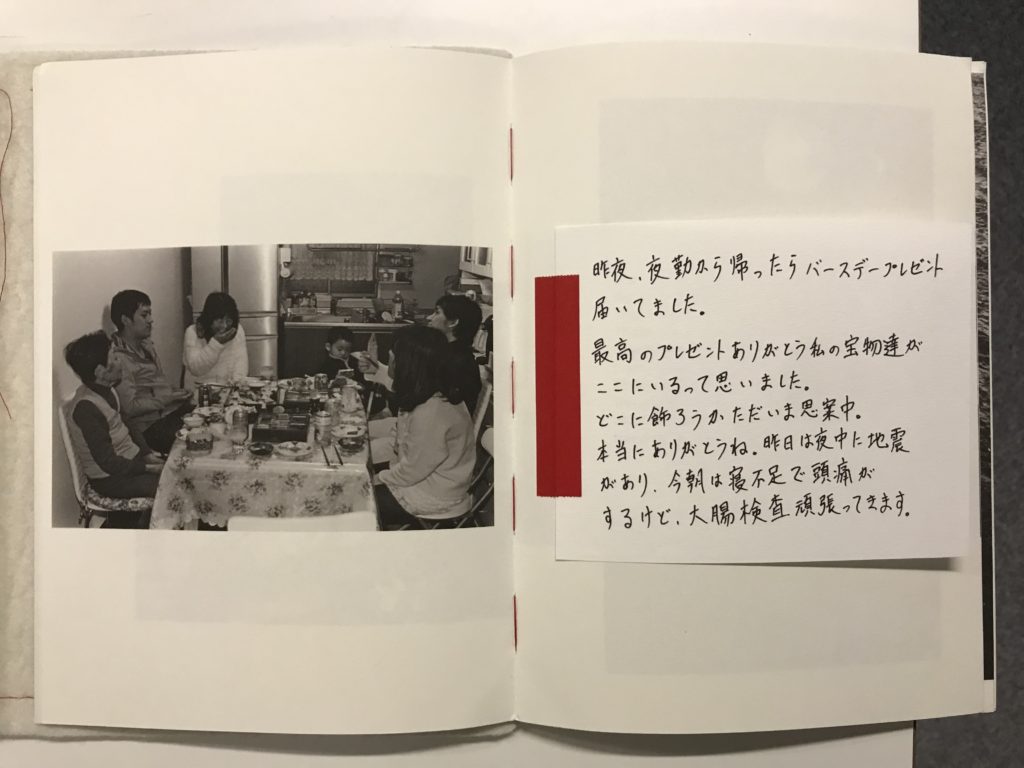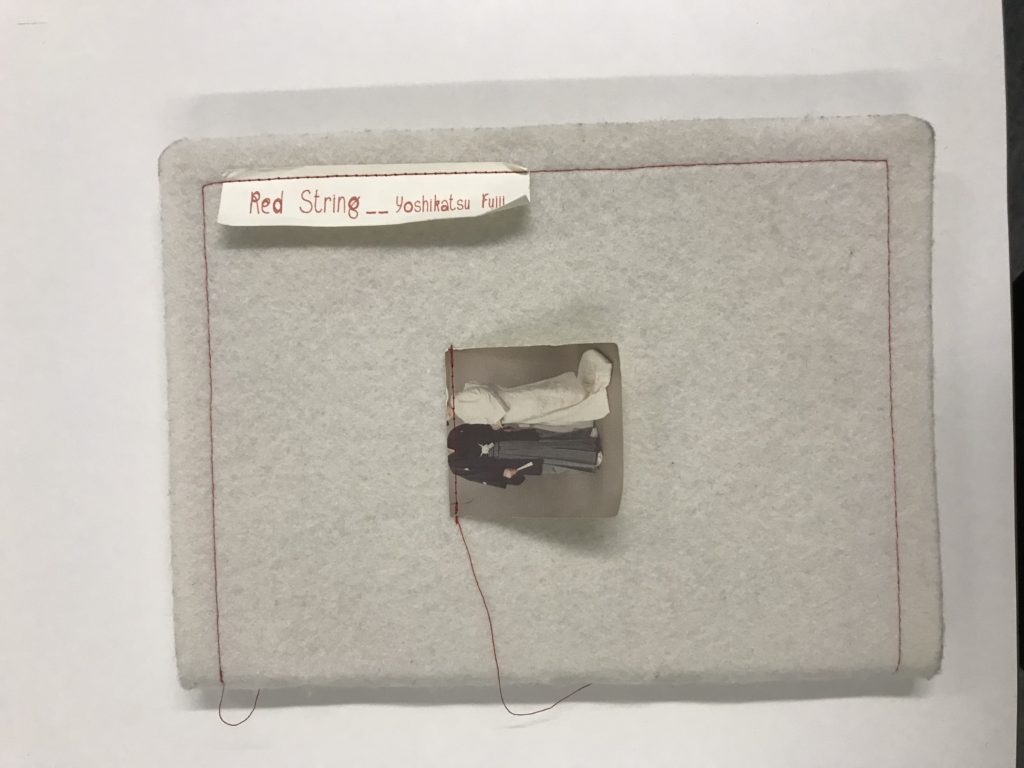The Red String was a book produced by a man named Yoshikatsu Fujji. The first page we are confronted with a separation between 2 striking images. The first picture on the left, is of his young father with a him as a baby whilst the one on the right is his mother holding the same child in the same environment.
Right from the beginning, we are presented with an element of separation which is what Fujii is trying to incorporate through the split of his parents. Right from the beginning, the separation is evident. Already the mother and father figure in the photo are also separated but the child stays In both pictures.
A direct link to his explanation of the event is below; https://www.yoshikatsufujii.com/red-string




What follows on the inside is a well thought out, properly constructed, book to capture the theme of separation and how and why it affected him the way it did. Flipping through each page contains a meaningful archival image either his parents wedding images, family photos, snapshots from his youth and objects with sentimental value. Fujji having done some interviews on this piece of work once said ” “My family will probably never meet all together again. But I can feel without a doubt that there is still proof inside each of us that we once lived together.”
As Fujii explains in the text at the back of the book, there is a Japanese legend that says predestined lovers are tied together by an invisible piece of red string, from the moment they are born. While that red string between his mother and father was apparently sundered, Fujii offers his Red String as a way to bind these losses back together.
Thus, the structure and layout of the book, combined with the fascinating mix of photos (old, new, black and white, color, abstract) blend together perfectly, offering an intimate artistic experience. It is exactly the kind of experience that is the unique province of this ever-changing, but loosely bound together thing we call the photobook



you must develop and publish the following for your essay :
1.Introduction – outline the function of your essay
2.Context – realism / pictorialism / modernism / postmodernism etc
3. Image Analysis 1
4.Image Analysis 2
5. Compare and contrast
6. Conclusion